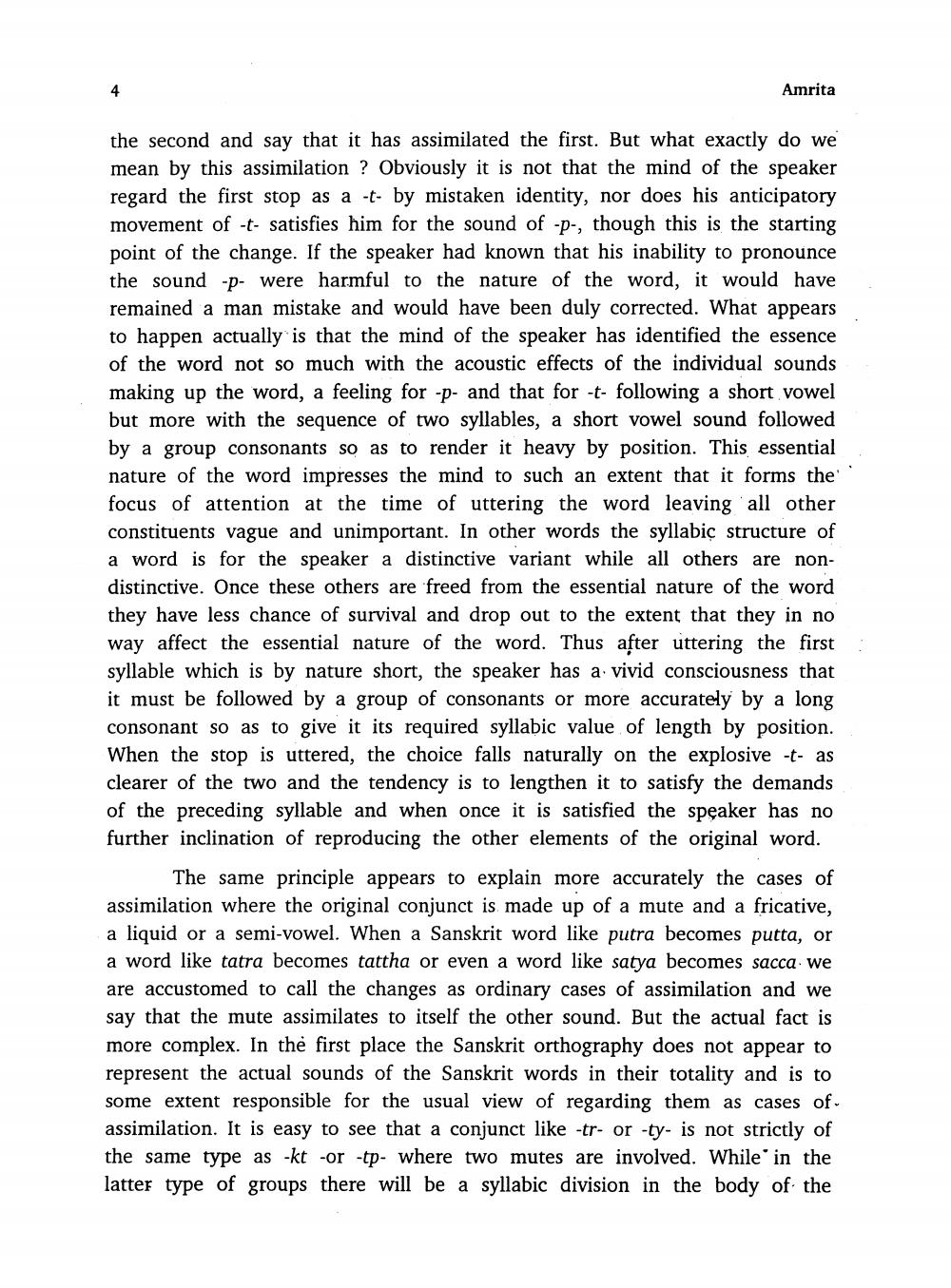________________
Amrita
the second and say that it has assimilated the first. But what exactly do we mean by this assimilation ? Obviously it is not that the mind of the speaker regard the first stop as a -t- by mistaken identity, nor does his anticipatory movement of -t satisfies him for the sound of -p-, though this is the starting point of the change. If the speaker had known that his inability to pronounce the sound -p- were harmful to the nature of the word, it would have remained a man mistake and would have been duly corrected. What appears to happen actually is that the mind of the speaker has identified the essence of the word not so much with the acoustic effects of the individual sounds making up the word, a feeling for -p- and that for-t- following a short vowel but more with the sequence of two syllables, a short vowel sound followed by a group consonants so as to render it heavy by position. This essential nature of the word impresses the mind to such an extent that it forms the focus of attention at the time of uttering the word leaving all other constituents vague and unimportant. In other words the syllabic structure of a word is for the speaker a distinctive variant while all others are nondistinctive. Once these others are freed from the essential nature of the word they have less chance of survival and drop out to the extent that they in no way affect the essential nature of the word. Thus after uttering the first syllable which is by nature short, the speaker has a vivid consciousness that it must be followed by a group of consonants or more accurately by a long consonant so as to give it its required syllabic value of length by position. When the stop is uttered, the choice falls naturally on the explosive -t- as clearer of the two and the tendency is to lengthen it to satisfy the demands of the preceding syllable and when once it is satisfied the speaker has no further inclination of reproducing the other elements of the original word.
The same principle appears to explain more accurately the cases of assimilation where the original conjunct is made up of a mute and a fricative, a liquid or a semi-vowel. When a Sanskrit word like putra becomes putta, or a word like tatra becomes tattha or even a word like satya becomes sacca we are accustomed to call the changes as ordinary cases of assimilation and we say that the mute assimilates to itself the other sound. But the actual fact is more complex. In the first place the Sanskrit orthography does not appear to represent the actual sounds of the Sanskrit words in their totality and is to some extent responsible for the usual view of regarding them as cases of assimilation. It is easy to see that a conjunct like -tr- or -ty- is not strictly of the same type as -kt -or-tp- where two mutes are involved. While in the latter type of groups there will be a syllabic division in the body of the




